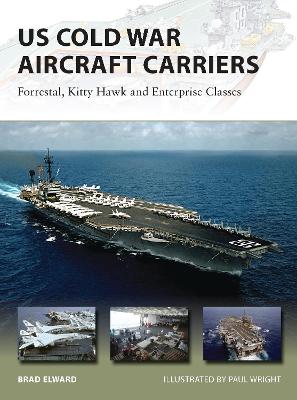New Vanguard
1 primary work • 2 total works
Book 174
The Nimitz class aircraft carrier is the ultimate symbol of the United States superpower status. A true behemoth, this is an unsurpassed weapons platform that overshadows all of its nearest rivals. A history of the world's largest aircraft carriers, with runways over 300 meters long, this book looks at the development and deployment of the nuclear-powered Nimitz class aircraft carriers from 1975 when the USS Nimitz, the lead ship of the class, was commissioned, to the present day. All of the class are still operational and the tenth and last of the class, the USS George H. W. Bush, was commissioned in 2009. Here, Brad Elward provides a detailed overview of their design and development, highlighting their unique features, from jet blast deflectors to cutting edge radar systems, and a history of the Nimitz class in service, from deployment in the Gulf during Operation Desert Storm, through to the enforcement of the no fly zone over Bosnia.
The Forrestal class (Forrestal, Saratoga, Ranger, and Independence) was the first completed class of US Navy supercarriers, so-named for their 25 percent size increase over the World War II-era carriers such as the Midway class, and the strength of their air wings (80–100 aircraft, compared to 65–75 for the Midway, and fewer than 50 for the Essex class). Design-wise, the Forrestals were a huge improvement over their predecessors, being more stable and comfortable, while maintaining advancements such as the armored flight decks that had been introduced with the Midway. The Kitty Hawk class was an improvement on the Forrestal-class designs, and four were built in the 1960s – Kitty Hawk, Constellation, America and John F. Kennedy. These were even longer than the Forrestals, and fitted with advanced defensive weapons systems and an improved elevator layout. All nine of the carriers covered by this volume are icons, and hold a much-respected place in US naval history. They are also some of the more well-known vessels outside of the military, for their long service histories, as well as for some of the more unfortunate events that seem to follow them.

